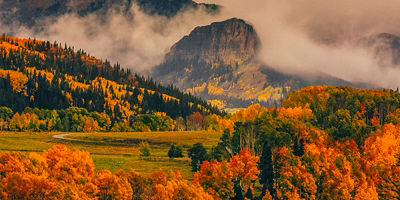
There are 63 full-fledged parks in our National Park Service system, representing the most outstanding landscapes throughout the United States. Protecting the deepest canyons, tallest peaks and most lush forests has been dubbed “America’s best idea,” but the truth is, the vast majority of those parks were established with two public user groups in mind: automobile drivers and hikers. Cyclists, on the other hand, are typically an afterthought. But it’s easy to argue that there’s no better way to immerse yourself in the landscape than on two wheels, cruising through a river valley or muscling it up a mountain pass. And some national parks go out of their way to make bikers feel more welcome with discounted entry fees, designated paths and special “car-free” days where cyclists rule a park’s signature scenic road. Here are the best national parks for road cyclists.
Crater Lake National Park
First off, this park is stunning, even when compared to iconic others that offer heaps of grandeur. It protects its namesake lake, which is the deepest pool in the U.S., created when the active volcano, Mount Mazama, erupted and collapsed into itself—the resulting giant bowl has collected rainwater for 7,700 years. Experience it on the 33-mile Rim Drive, which circumnavigates the lake and offers nonstop views. Most of the time, cyclists and vehicles must share the road, which, unfortunately, does not feature bike lanes. However, the park occasionally shuts the road down to cars, giving bikers free reign during Ride the Rim events (register in advance). Level Up: Is riding the Rim Drive once not enough of a challenge for you? Join the century club by pedaling it three times in a day.
More Info: ridetherimoregon.com, nps.gov
Shenandoah National Park
There’s only one paved road inside Virginia’s Shenandoah National Park, which protects a particularly gorgeous stretch of mountains ripe with craggy peaks and ice-cold waterfalls: the 105-mile-long Skyline Drive, which runs north to south through the center of the park along the ridge of the Southern Appalachian Mountains. It’s not for the faint of heart—you’ll climb 15,000 feet of elevation if you complete the whole road. Also, you’ll share the road with vehicles, though views are still stellar—you’ll have 75 scenic overlooks along the road to catch your breath. Go Long: The road is equipped with campgrounds and lodges, so you can break up the journey into a multi-day effort. And if you’re really gung-ho, when you finish Skyline Drive, you can roll directly into the Blue Ridge Parkway, which extends for 469 miles from the southern border of Shenandoah National Park to the border of Great Smoky Mountains National Park.
More Info: nps.gov





















